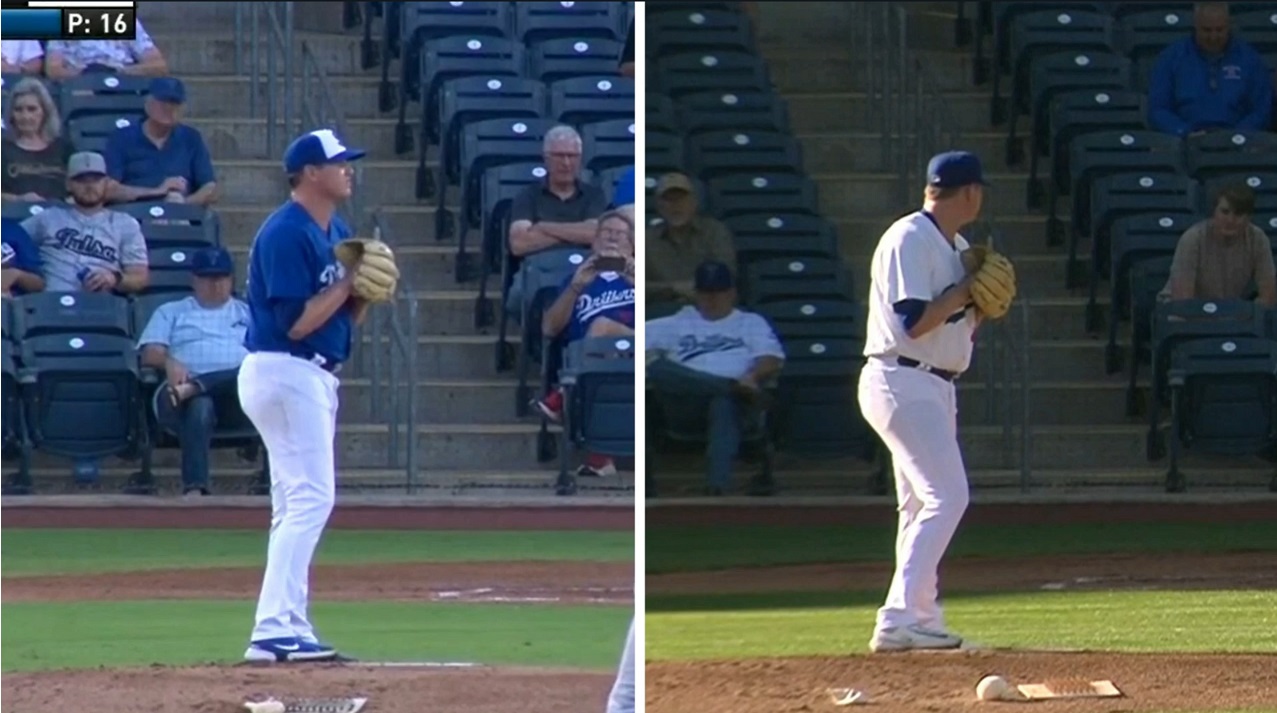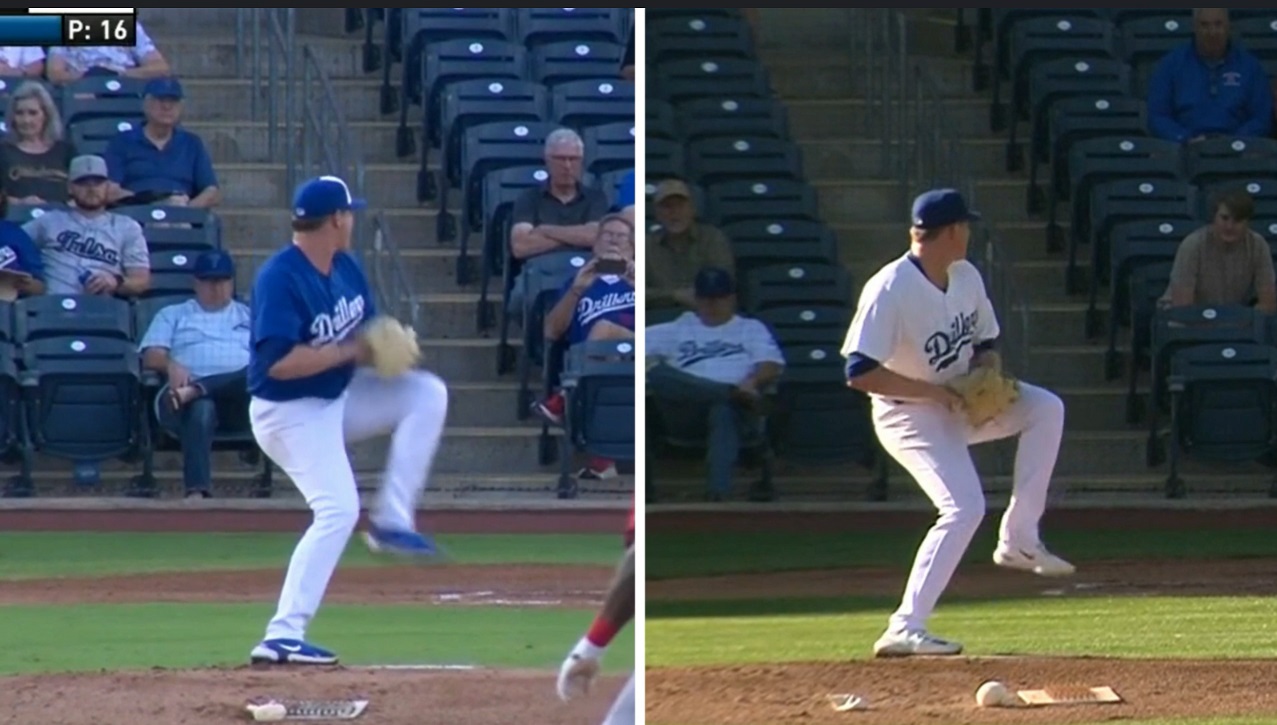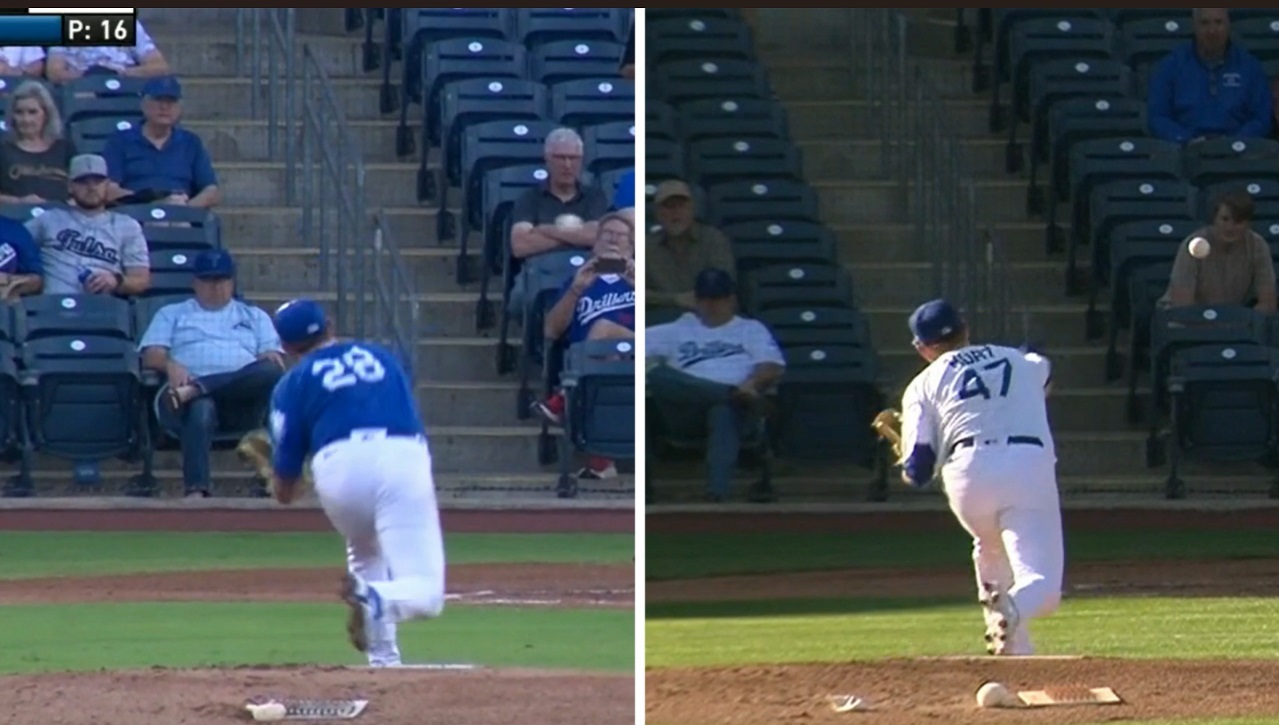Fastball in the mid-to-upper 90s with natural cut. Changeup that gets whiffs on 58 footers. 2750 RPM slider, 2800 RPM curve. Workhorse, 6’3, 240 lbs frame. All that put together sounds like a rather ideal pitching prospect starter kit, doesn’t it? Indeed, Kyle Hurt has one of the better stuff profiles in the Dodger farm system, but unless know where it’s going on a consistent basis, that doesn’t matter all that much, and there are early indications that the he just may have found something.
——
Hurt, who was acquired along with Alex Vesia in the Dylan Floro trade, was a Helium pick of mine back in the Fall of 2021 due to the aforementioned repertoire, along with a belief that the Dodgers could help rein things in. A locked-in Hurt could be completely overwhelming, like he was on July 24th and August 11th of last year, when he combined to toss 8.0 scoreless innings, allowing 8 hits (all singles), with a K/BB of 16/2. The problem was the two outings in between, during which he allowed 9 runs (10 earned) in 4.1 IP, with a K/BB of 6/7. It’s rather difficult to climb the ladder with command that is transient at best.
Flash forward to 2023, and what the what?
The burly righty is currently running a strikeout rate of 42.9% and a walk rate of 8.2%, and this is coming after posting marks of 26.6% and 21.9% in those same categories last year at the Double-A level. Hurt is hardly the first hard-throwing prospect to miss the zone a bit, but to put a 21.9% walk rate in perspective, the former USC Trojan is one of 493 pitchers to log 30 or more innings at Double-A last season. 21.9% is the third-worst out of the lot of ’em. It was bad.
Now, 12.2 innings is a little small of a sample to go full buy-in, but this spans five outings, surely there’s some sort of a change, right?
First, the side-by-side video, on the left is September 15th, 2022, and on the right, yesterday, the video is full speed and then slowed down:
Even slowed down, it’s a bit devilish to spot the changes, so I’m going to highlight them with some stills.
First off, the setup. Hurt starts off with his right knee just a bit more bent, and as both of these outings happened in Tulsa, you can note that his head relative to the concrete stairs in the stands is just a tad lower this year:

This is more of an athletic position from the get go, so that’s already a positive. The right quad is engaged, and it’s a more powerful position from which to drive towards the catcher.
Second, separation. In 2022, Hurt’s hands stayed higher for longer, and they went away from his body. In 2023, he is making a noticeable effort to keep everything closer to the center line and getting his hands separated a bit sooner. Keeping things in tighter can help prevent sending any momentum in unwanted directions, and taking his hands down and then separating has the added benefit of helping to hide the ball longer.

Third, the toe drag. On the left you can see his drive (right) foot clearly off the ground, where the left remains in contact a good bit longer:

There are a couple benefits from this:
- the drive leg remaining in contact with the ground longer helps to ensure your momentum continues in the original, intended direction for longer
- when a drive foot lifts, everything tends to lift a bit, which can alter your release point pitch to pitch, so maintaining ground contact can help keep the release point consistent
To sum, with these subtle changes, Hurt is in a more athletic setup that helps engage that big tree trunk of a right quad from the outset, while working to ensure his energy is directed towards the plate, along with limiting variance with his release point pitch to pitch. Athletic, directed, consistent.
——
Long term, Hurt’s role is yet to be determined. The Dodgers have a tendency to let a guy start until he proves he can’t beyond a shadow of a doubt, and he threw as many as 89 pitches in an outing last season. While the 24-year-old hurler has the prototypical starter build, he is currently limited to approximately 50 pitches, leaving no answer as to whether he can maintain his delivery as an outing progresses beyond that of a multi-inning relief-type.
And again, it’s just 12.2 innings, which isn’t enough to go full buy-in. But when there’s an incredible reduction in walk rate, coupled with subtle yet possibly substantive mechanical changes, at the very least it’s enough to sit up and pay attention, and track the progression going forward.
 Dodgers Digest Los Angeles Dodgers Baseball Blog
Dodgers Digest Los Angeles Dodgers Baseball Blog
